Abstract
Acute corneal ulceration in malnourished children is the commonest cause of childhood blindness in Northern Nigeria and usually develops after measles. Other severe diseases in malnourished children rarely precipitate corneal ulceration. A survey in a school for blind children showed that 69% of the children were blind from corneal disease, and a survey of children with corneal scars showed that at least 42% were caused by ulceration after measles. The clinical appearance of the active ulcers was very varied. The serum retinol-binding protein and prealbumin levels in children with corneal ulcers following measles were below normal, but a group of malnourished children without eye complaints following measles were found to have even lower levels. Thus a specific deficiency of vitamin A does not appear to be the primary cause of these ulcers, though it may be a contributory one. A specific measles keratitis and secondary herpes simplex infectious may be local factors contributing to this ulceration, and there is nearly always a background of protein calorie malnutrition. Racial factors may also be of some significance.
Full text
PDF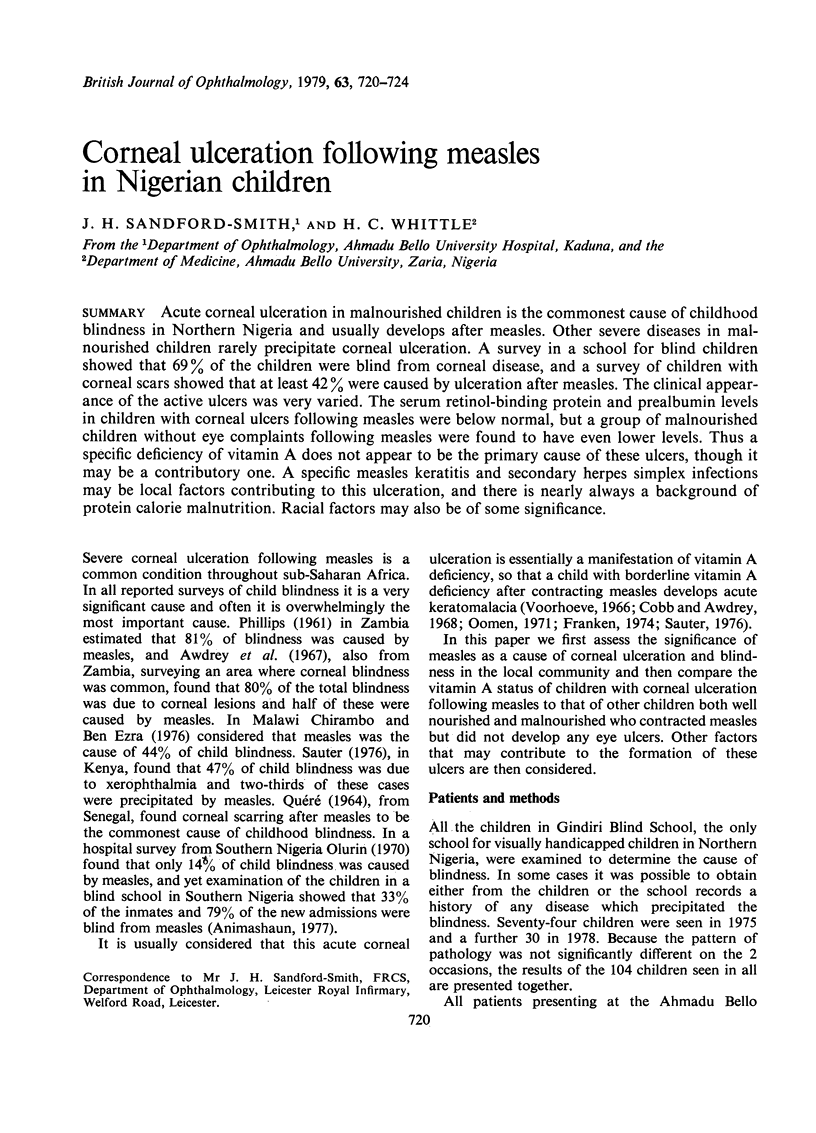
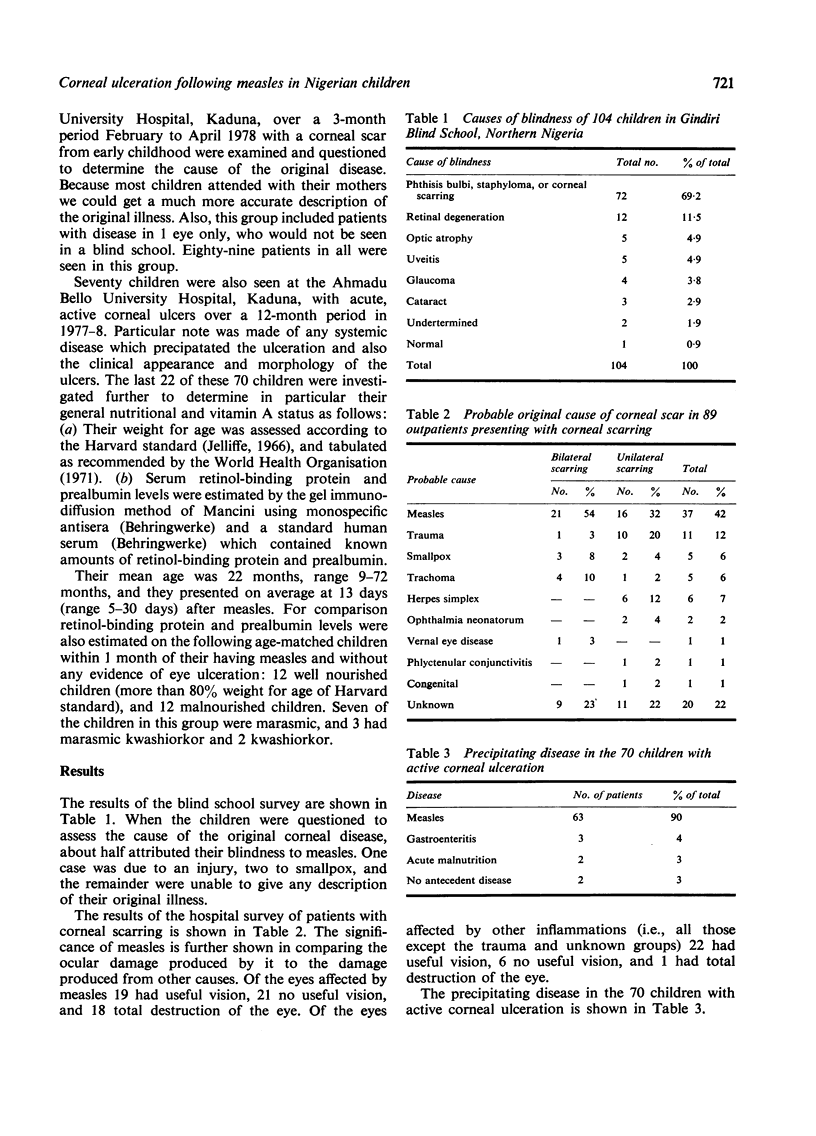
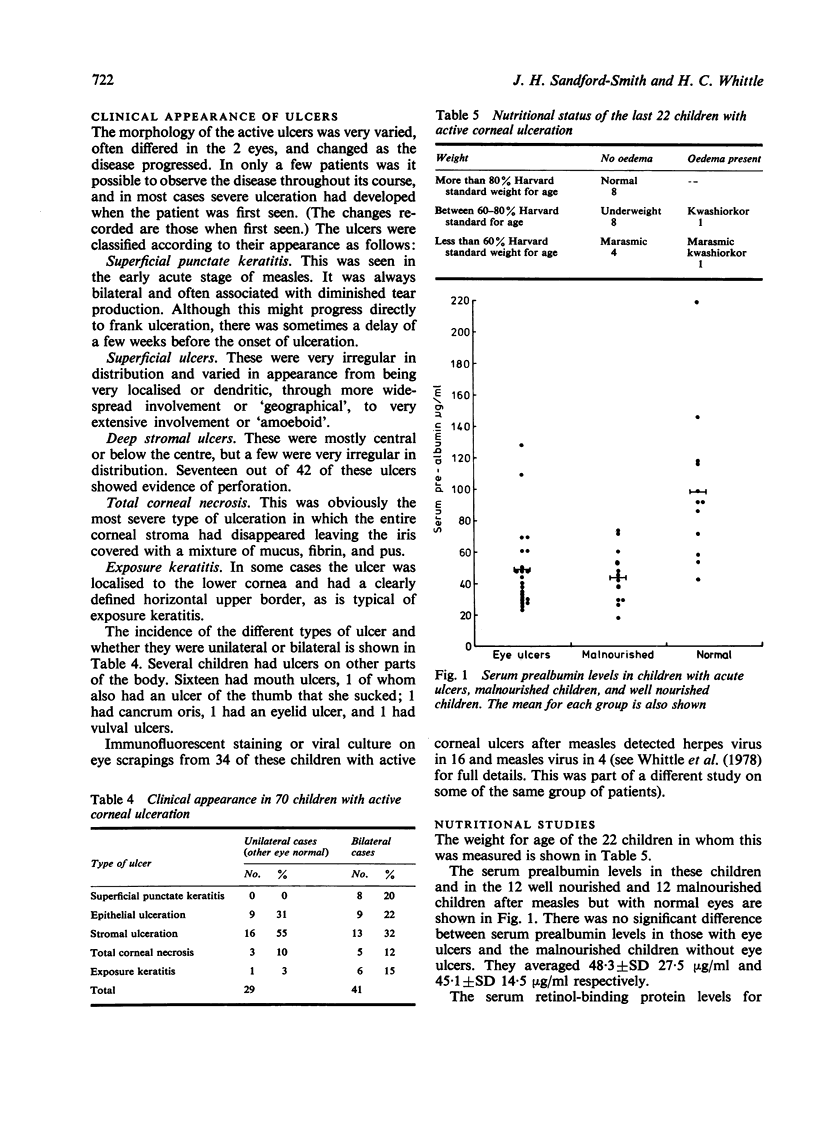
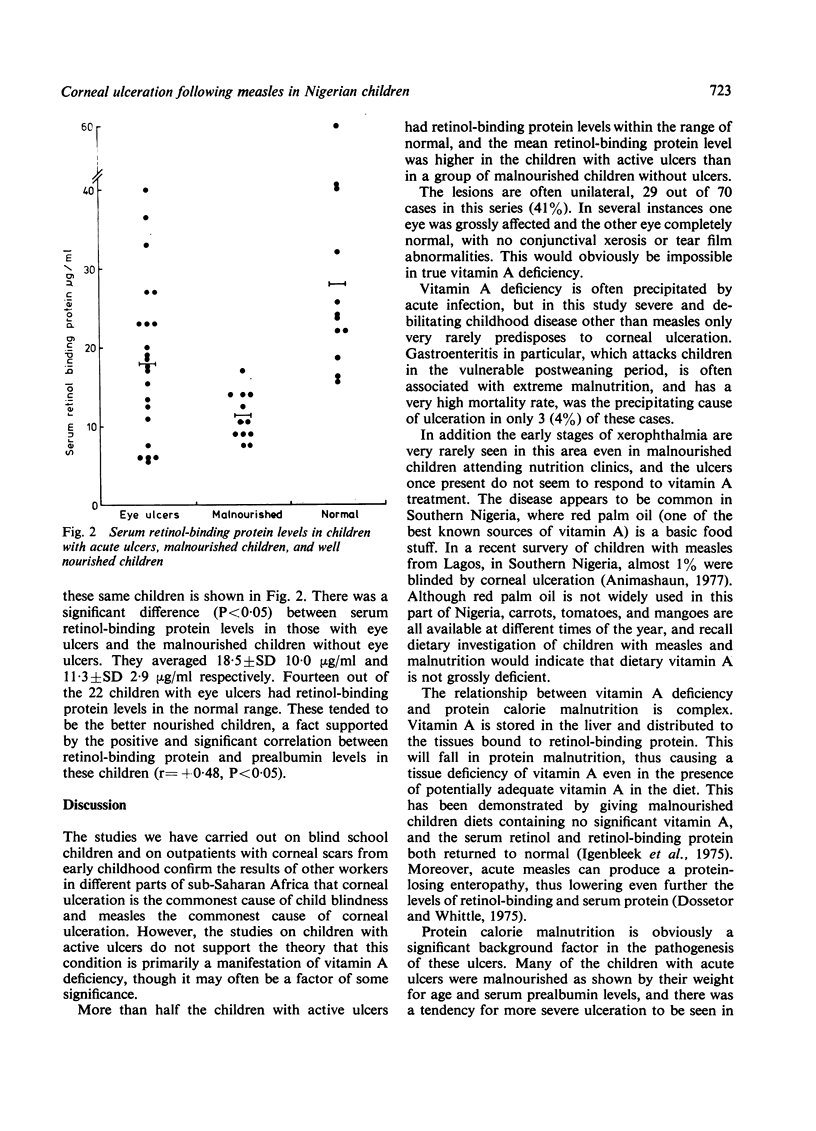
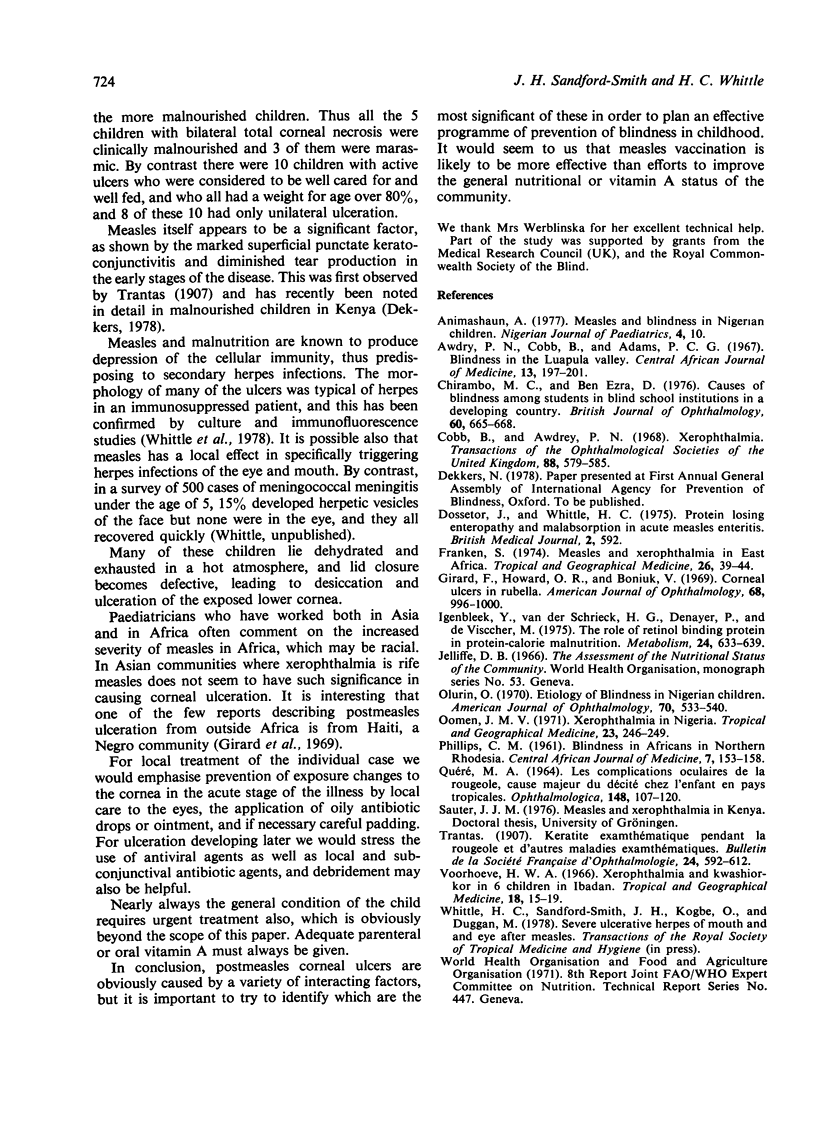
Selected References
These references are in PubMed. This may not be the complete list of references from this article.
- Awdry P. N., Cobb B., Adams P. C. Blindness in the Luapula valley. Cent Afr J Med. 1967 Sep;13(9):197–201. [PubMed] [Google Scholar]
- Chirambo M. C., Benezra D. Causes of blindness among students in blind school institutions in a developing country. Br J Ophthalmol. 1976 Sep;60(9):665–668. doi: 10.1136/bjo.60.9.665. [DOI] [PMC free article] [PubMed] [Google Scholar]
- Cobb B., Awdry P. N. Xerophthalmia. Trans Ophthalmol Soc U K. 1969;88:579–585. [PubMed] [Google Scholar]
- Dossetor J. F., Whittle H. C. Protein-losing enteropathy and malabsorption in acute measles enteritis. Br Med J. 1975 Jun 14;2(5971):592–593. doi: 10.1136/bmj.2.5971.592. [DOI] [PMC free article] [PubMed] [Google Scholar]
- Franken S. Measles and xerophthalmia in East Africa. Trop Geogr Med. 1974 Mar;26(1):39–44. [PubMed] [Google Scholar]
- Frederique G., Howard R. O., Boniuk V. Corneal ulcers in rubeola. Am J Ophthalmol. 1969 Dec;68(6):996–1003. doi: 10.1016/0002-9394(69)93439-4. [DOI] [PubMed] [Google Scholar]
- Ingenbleek Y., Van Den Schrieck H. G., De Nayer P., De Visscher M. The role of retinol-binding protein in protein-calorie malnutrition. Metabolism. 1975 May;24(5):633–641. doi: 10.1016/0026-0495(75)90143-2. [DOI] [PubMed] [Google Scholar]
- Olurin O. Etiology of blindness in Nigerian children. Am J Ophthalmol. 1970 Oct;70(4):533–540. doi: 10.1016/0002-9394(70)90886-x. [DOI] [PubMed] [Google Scholar]
- Oomen J. M. Xerophthalmia in northern Nigeria. Trop Geogr Med. 1971 Sep;23(3):246–249. [PubMed] [Google Scholar]
- PHILLIPS C. M. Blindness in Africans in Northern Rhodesia. Cent Afr J Med. 1961 May;7:153–158. [PubMed] [Google Scholar]
- Voorhoeve H. W. Xerophthalmia in the presence of kwashiorkor in Nigeria. Trop Geogr Med. 1966 Mar;18(1):15–19. [PubMed] [Google Scholar]


